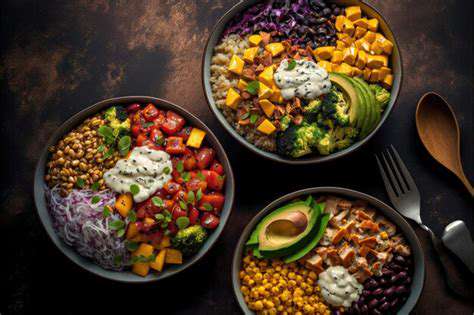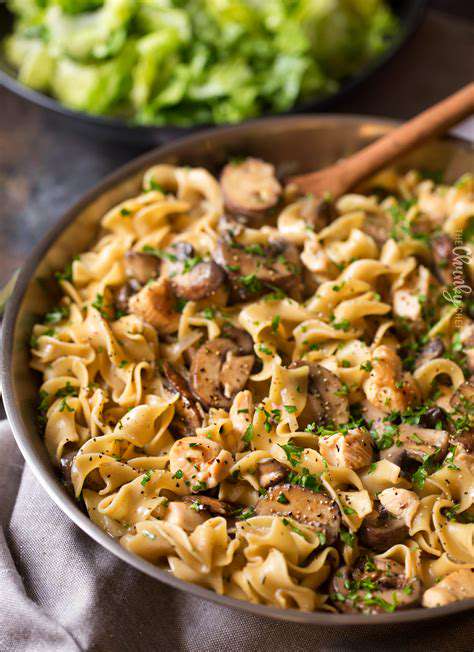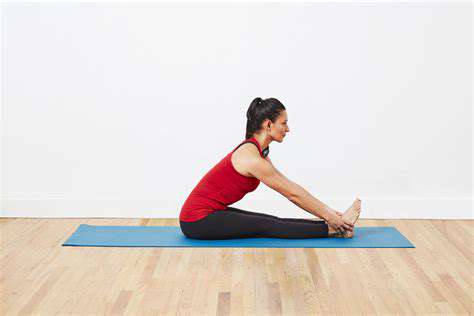20 Healthy Dinner Recipes for Weight Loss
Outline
Salads boost fruit and vegetable intake, reducing chronic disease risk.
Colorful salads maximize nutrition through diverse ingredients.
Incorporate grains and legumes for satisfying, weight-loss-friendly salads.
Homemade dressings control calories and enhance salad flavors.
Seasonal ingredients elevate taste and nutrition in salads.
Flavorful grain bowls support digestive health with whole grains and vegetables.
Layering flavors in grain bowls maximizes taste and enjoyment.
Grain bowls can be easily customized for dietary needs.
One-pot meals simplify cooking and promote healthy eating habits.
Balanced one-pot meals provide essential nutrients for weight management.
Meal prepping one-pot meals encourages mindful eating practices.
Wraps and tacos offer versatility and nutrient-rich options.
Creative fillings enhance the nutritional value of healthy wraps.
Lower-calorie tortillas can be made from alternative ingredients.
Casseroles combine convenience with essential nutrients for balanced meals.
Casseroles are adaptable for various dietary requirements and preferences.
Proper storage and reheating of casseroles extend their shelf life.
Light desserts can be made with fresh fruits and Greek yogurt.
Chia pudding and baked apples are healthy dessert options.
Nourishing Salads
Benefits of Incorporating Salads into Your Dinner Routine
Adding salads to your evening meals does more than just fill your plate—it actively supports long-term wellness. Regularly eating leafy greens and crunchy veggies has been linked to lower rates of heart issues and better blood sugar control. Think of each bowl as a chance to crowd out less nutritious options while flooding your body with vitamins.
Rainbow-colored salads work like nature's multivitamin. Dark greens offer magnesium, orange carrots deliver beta-carotene, and red tomatoes pack lycopene. Mixing textures—creamy avocado with crisp radishes or juicy berries with crunchy almonds—keeps meals exciting and nutritionally complete.
Creative Salad Combinations for Weight Loss
Ditch the iceberg lettuce monotony. Try massaged kale with warm roasted squash and toasted pepitas for a satisfying crunch. Farro salads with roasted Brussels sprouts and tart apples prove that whole grains can be the star of your bowl. For protein-packed options, mix black beans with charred corn, diced jicama, and a zesty lime dressing.
Texture play makes all the difference. Add roasted chickpeas for crunch instead of croutons, or try pan-seared halloumi for a salty kick. These smart swaps keep calories in check while delivering maximum flavor and staying power between meals.
Tips for Making Healthy Dressings
Store-bought dressings often hide sugar bombs and questionable preservatives. Whip up a vibrant green goddess blend using avocado, parsley, and lemon juice—it’s creamy without the mayo. For Asian-inspired flair, mix rice vinegar, grated ginger, and a dash of sesame oil. Keep a squeeze bottle in your fridge for instant salad upgrades all week.
Yogurt-based dressings offer tangy richness with half the calories of traditional ranch. Blend in fresh dill, garlic, and a splash of buttermilk for a dip-worthy coating. Experiment with infused oils—basil or chili varieties can transform simple greens into something special.
Seasonal Ingredients for Fresh Salad Ideas
Spring’s tender asparagus and snap peas beg to be shaved into ribbons over bitter greens. Come summer, pair watermelon chunks with salty feta and mint for a refreshing twist. Autumn’s roasted root vegetables become salad royalty when tossed with walnut oil and pomegranate seeds. Even winter offers citrus bursts—try blood orange segments with radicchio and pistachios.
Farmers’ markets inspire seasonal creativity. Chat with growers about unusual varieties—maybe dragon tongue beans or golden beets—to keep your salad game strong year-round. Preserve summer’s bounty by quick-pickling vegetables for off-season crunch.
Flavorful Grain Bowls

Ingredients for Balanced Grain Bowls
The magic of grain bowls lies in their architectural potential. Start with nutty freekeh or purple barley for visual drama. Roasted cruciferous veggies like cauliflower or broccolini add depth, while quick-pickled onions cut through richness. Don’t forget the power garnish—everything from nori flakes to za’atar brings final-layer excitement.
Layering Flavors for Maximum Impact
- Base: ½ cup cooked ancient grains
- Crunch: ¼ cup shredded cabbage or julienned cukes
- Protein: Palm-sized portion of grilled tempeh or fish
- Drizzle: 1 tbsp miso-tahini blend or herb chimichurri
Build flavors like you’re composing a symphony. Start with earthy grains, add roasted veggies for sweetness, then bright elements like quick-pickled veggies. A surprise element—maybe crispy shallots or marinated mushrooms—creates that “one more bite” compulsion.
Customizing Your Grain Bowl
Grain bowls adapt to any dietary path. For keto followers, swap grains with riced cauliflower. Nut allergy? Use sunflower seed butter in sauces. Time-crunched? Batch-cook components Sunday night for grab-and-go lunches. Keep dressings separate until serving to maintain perfect textures.
Health Benefits and Weight Loss Potential
These bowls naturally encourage portion awareness while delivering fiber punches that keep hunger hormones in check. Studies confirm that people who eat whole grains daily tend to have smaller waist measurements. The act of assembling layers also slows eating pace, giving fullness signals time to register.
Hearty One-Pot Meals

Benefits of One-Pot Meals for Weight Loss
Single-pot cooking eliminates the “I’ll just nibble while prepping” trap. Everything cooks together, making calorie tracking straightforward. The steam from simmering dishes naturally tenderizes lean proteins without added fats. Plus, fewer dishes mean less temptation to reach for unhealthy convenience foods.
Key Ingredients for Hearty One-Pot Meals
- Broth base: 4 cups low-sodium vegetable or bone broth
- Aromatics: 2 minced garlic cloves + 1 diced onion
- Texture mix: ½ cup pearled barley + 1 cup lentils
Build flavor foundations with sautéed mirepoix, then layer in spices to bloom their oils. Smoked paprika transforms humble chickpeas, while turmeric gives golden hue and anti-inflammatory benefits. Finish with hearty greens that wilt perfectly in residual heat.
Simple Techniques for Preparing One-Pot Meals
Master the order of operations: Brown meats first for fond, remove, then soften veggies. Deglaze with wine or vinegar before adding grains. Stir in delicate herbs like basil just before serving to preserve their brightness. Let dishes rest off heat—this allows grains to absorb remaining liquid without mushiness.
Popular One-Pot Meal Recipes to Try
Moroccan tagine with apricots and chicken thighs offers sweet-savory balance. For meatless Mondays, try Ethiopian red lentil stew with berbere spice. Leftovers? Freeze individual portions in muffin tins for instant “flavor bombs” to boost future soups.
Delightful Wraps and Tacos
Understanding the Nutritional Benefits of Wraps and Tacos
Whole-grain tortillas act as edible portion controllers—their size naturally limits overeating. Collard green wraps provide sturdy, vitamin K-rich vessels for messy fillings. Stuffing strategies matter: Layer wettest ingredients between dry greens to prevent sogginess.
Creative Filling Ideas for Healthy Wraps
Think beyond basic veggies. Try curried chicken salad with grapes and almonds, or buffalo cauliflower with blue cheese slaw. For Mediterranean vibes, stuff grilled halloumi with sun-dried tomatoes and kalamata tapenade. Breakfast-for-dinner wraps with scrambled tofu and sweet potato hash work surprisingly well.
Tips for Making Lower-Calorie Tortillas
Whip up 2-ingredient tortillas: Mix ½ cup oat flour with ¼ cup water, rest 10 minutes, then roll thin. Sweet potato “tortillas”—roast, peel, and mash with chickpea flour for pliable wraps. For crisp tacos, spray corn tortillas lightly and bake instead of frying.
Satisfying Casseroles
1. Nutritional Benefits of Casseroles
Casseroles secretly boost veggie intake—finely chopped mushrooms blend seamlessly into meat sauces, while pureed squash thickens cheese sauces guilt-free. Using nutritional yeast instead of Parmesan adds B vitamins without dairy.
2. Easy Preparation and Cooking Techniques
Prep components separately: Roast veggies while browning meat, then combine. Freeze unbaked casseroles with parchment between layers for stackable meal prep. Bake in individual ramekins for built-in portion control.
Dessert for Dinner: Light Options
Choosing the Right Ingredients for Light Desserts
Silken tofu whips into creamy mousse, while date paste naturally sweetens energy bites. Frozen banana “nice cream” satisfies cravings with potassium boost. Layer yogurt parfaits with crushed nuts for crunch instead of granola.
Simple Light Dessert Recipes to Try
Grill pineapple rings and dust with chili-lime salt. Poach pears in red wine with star anise for elegant finish. Blend frozen mango with coconut milk for instant sorbet—no ice cream maker needed.
Read more about 20 Healthy Dinner Recipes for Weight Loss
Hot Recommendations
-
*Guide to Managing Gout Through Diet
-
*Best Habits for Financial Well being
-
*How to Build a Routine for Better Mental Health
-
*How to Eat Healthy on a Budget [Tips & Meal Ideas]
-
*Guide to Practicing Self Acceptance
-
*How to Incorporate More Movement Into Your Day
-
*Guide to Managing Chronic Pain Naturally
-
*Guide to Building a Reading Habit for Well being
-
*Top 5 Weight Loss Supplements That Actually Work
-
*Best Exercises for Postpartum Recovery [Beyond Abdominal Work]

